|
Here at Ferrets and Friends, we have been hard at work training our two newest ferret recruits how to get along with people. Pabu and Abu have just turned seven months old. At this age, young ferrets are gaining more impulse control so they become easier to train. It's important to remember that ferrets tend to play rough so it is part of their nature to be rough with their human friends. Ferrets can be gentle and affectionate pets, but it is our responsibility to teach them how to best communicate with us. We have put together some of our top tips to help with the communication process. Reduce Opportunities to Learn Bad BehaviorsLike most young mammals, young ferrets have a tendency to explore the world with their mouth. New objects are sampled with their teeth. In their excitement, they will nip at stuffed animals, pillows, furniture, electrical chords, shoes, and even their human caretakers. Their mouth-first approach at life will lesson as they get older and many ferrets naturally grow out of their nippy phase. However, if they discover that a nip at an ankle will produce of fun game of tag with their human companion, then that's something they will not outgrow. To minimize bad behaviors, keep unsocialized ferrets away your face, neck, and elbows. Wear long pants and use whatever foot coverings are the least interesting to your ferret (some may chewing socks, while other find endless entertainment in shoes). Gradually expose your ferret to other interactions at times when your ferret has the best chance of success. For example, towards the end of play time when your ferret is most calm, you may snuggle your ferret near your face or allow your ferret to sniff your feet. These interactions should be brief and followed up with positive reinforcement when your ferret shows calm non-biting behavior. Look for Good Behaviors and Reward ThemCommunication is a two way street. As much as we would like to simply tell our ferrets "don't bite me!", we also have to pay attention to their interests and desires. Ferrets tend to be very quiet pets so it is easy to miss some of their cues for our attention. If your ferret is biting your feet in order to get your attention, chances are that you have already missed several other cues that they have tried which caused them to resort to biting. To avoid problem behavior, look for the behavior that you want to see and respond to that behavior. If your ferret walks over to you and looks up at you, acknowledge their presence and offer your attention. If your ferret appears to be in a playful mood, encourage your ferret to play with toys instead of nipping your hands. Reward good behaviors before they figure out that bad behaviors work better. If your ferret has already developed a biting habit, you can reduce this habit by gradually working backwards towards more acceptable behavior. For example, you can teach your ferret to move from biting to lighter nipping, to licking, and eventually to just sniffing. This is done by rewarding the more tolerable behavior and putting a ferret in a time out for the more severe behavior. As your ferret learns, you continue to move the bar closer to the type of interaction that you want to have with your ferret. This technique has worked well for us with more anxious ferrets. If you have a nippy ferret who gets punished every time they bite you, your ferret may interpret these punishments as you not wanting to interact with them. By rewarding your ferret for more tolerable (but not ideal) behaviors, this teaches your ferret what direction to move towards rather than confusion about your interactions. Find What Works Best for Your FerretEvery ferret is different. For some ferrets, scruffing their neck and a soft hiss easily communicates that a nip was unwanted. Others may get more excited and bite harder! Time outs can be effective deterrents for some ferrets, while others may take the opportunity for a nap. It is equally important to find what motivates your ferret. Some may be motivated by treats, while others enjoy a shoulder scratch, or a chance to play with their favorite toy. Each ferret has an individual personality and has different things that motivate them. It is also important to look at the context of a biting behavior. Ferrets that bite while being held may be trying to communicate that they would like to be put down. Some ferrets may bite when they hear high pitch sounds (such as squeaky toys) or smell certain chemicals. These distress bites should be recognized and appropriate changes should be made to their environment (getting rid of squeaky toys or not wearing strong smelling cologne when handling your ferret). Ferrets are quick learners so if you do not see improvement within a week or two of working with your ferret, try a different tactic. For best results, make sure at least one part of your training involves positive reinforcement.
1 Comment
Horses love to run and play in cold weather to keep warm!
Horses have been domesticated for over 6,000 yrs and bred for a large variety of purposes. Originally used for food and transportation, the horse is now used for many sports, games and competitions as well as still finding their place as a work animal in some cultures. A mare's gestation period is around 11 months, after which a foal should stay with their mother for 5-6 months. Most male horses (colts) are gelded around 18 months of age, while females called fillies are generally left intact. The age at which a colt is gelded is often based on their temperament, as leaving a quiet and non-studish colt intact until they begin work under saddle can improve strength and muscle tone. In the wild horses exhibit short bursts of activity followed by long periods of quiet grazing, socializing and gentle playfulness. Socializing is an important part of the herd dynamic, and can be fascinating to watch! Although often thought of as high spirited and with lots of presence, the horse is a prey animal who often communicates silently though body language. It is important to understand your horses language to keep yourself safe together, as well as to establish a healthy bond with your horse! Whether as a companion or a sporting partner, a minimum of two acres of turnout area per horse is necessary. Any turnout area needs to have a shelter that the horses can access at will with three walls and a roof. A 12ft x 18 ft run in shed is adequate for 2-3 average sized horses if they get along quite well.
Horses need a mainly forage diet. Forage includes grass, hay, and beet pulp which may be added to high quality feed as a supplemental form of forage. Horses can be fed as much forage as they will eat, with care being given to limit the sugar intake from hays such as alfalfa. Supplemental cereal grains may be added up to 1/2 lb of grain per 100 lbs of horse. As a social and herd animal, horses should be kept on the same property as other equines. Kept alone, a horse will develop depression and/or anxiety greatly dampening their quality of life and even their life span. They get along well with not just other horses but also ponies, donkeys and mules. Some highly anxious horses and those who can't be kept with other horses for special reasons (such as a stallion) even enjoy having a goat as a companion who can join them in the field, stall and away from home at competitions! Animal Care Costs per Month
While keeping a companion horse at your own farm with ample grass will save a lot on board and extra hay, a horse in training or at a boarding facility will require a lot more to keep healthy and happy! A young or green (inexperienced) horse, or any horse who is being used for competition will need professional training either continually or as a tune up from time to time. Since riding is a sport in which your equine team mate can't verbally talk to you, it is recommended to always take lessons in riding and horsemanship no matter what your experience level. Even Olympic Dressage riders still take lessons from one another! Horses require a high level of skill and knowledge to care for and shouldn't be taken on lightly. They can be very costly and have a longer life span than many other pets. Intelligent and social, horses form a strong bond with their herd mates including their human and thrive on routine and consistency. Many if not most behavioral problems leading to dangerous behavior can develop from the misunderstanding of equine language and the separation caused by buying, selling, and moving horses from farm to farm. A happy horse has the same owner for most or all of their life, with a stable long term herd at home. With appropriate time, research and work put in a horse can be a sport and adventure partner and companion like no other!
Domesticated rabbits come in a huge variety of colors and sizes, from netherland dwarf (at 2-5 lbs) to the Flemish Giant (at 30 lbs or more). It’s a common misconception that rabbits stay small as some breeds of rabbits can reach lengths of up to four feet long. Rabbits should stay with their mother for the first eight weeks. By four months of age, it is recommended that they are taken to a knowledgeable veterinarian to be spayed or neutered in order to prevent reproduction related cancers. Rabbits tend to be most active at dawn and dusk. Their favorite activities include digging, jumping, and napping (as many as 18 naps per day!). Most rabbits enjoy exploring their environment and require mental and social enrichment to prevent boredom. Cardboard boxes with plastic eggs that are filled with food or treats encourage your rabbit’s natural foraging behavior. Happy rabbits will often jump into the air and twist the back half of their bodies (this is known as a “Binky”) while one that is comfortable in their surroundings will flop onto their sides and show their bellies. Some may even roll over. There are many ways to house your rabbit but it is recommended that their space is at least 4-6 times the size of their body when they are entirely stretched out. More space should be provided if they will be confined for most of the day. An example of one space guideline is “at least 8 square feet of enclosure space combined with at least at least 24 square feet of exercise space, for 1-2 rabbits, in which the rabbit or pair can run and play at least 5 hours per day.” You can build your rabbit a two-story “condo” with the floors connected by a ramp, commonly called an C&C cage. You can also buy a hutch or set up an xpen which allows you to fit the sides of your rabbit's house to almost any space you have available. One of the most important things about setting up an enclosure is to have a sold, non wired, floor. When a rabbit stands on a wired floor for too long it will cause deformities in their feet.
A rabbit’s diet should be made up of good quality pellets, fresh hay (timothy or other grass hays), water and, fresh vegetables. Anything beyond that is a “treat” and should be given in limited quantities. Good quality rabbit pellets should be relatively high in fiber (18% minimum fiber) and the main ingredient should be timothy hay. The majority of the house rabbit diet should be composed of grass hay (about 75-80%), fresh greens (15%), good pellets (10%), and treats/fresh fruit (less than 5%). A more in depth break down on rabbit diet can be found here (https://rabbit.org/what-to-feed-your-rabbit/) Bunnies are very social creatures. It is often recommended that you have two rabbits in what is called a bonded pair. Having a pair can prevent depression which may cause them to neglect grooming and develop other health issues. You can often adopt a pair that are already bonded and some rabbit rescues offer bonding classes that help to bond your rabbit with a new bond mate. Rabbits are susceptible to a variety of health problems if they do not receive proper care. A common health issue is overgrown teeth which may require grinding by a healthcare professional. As rodents, their teeth continuously grow and this growth is normally managed by their diet and chewing behavior. Rabbits can also develop sore hocks, causing areas of the feet to lose their hair and the skin to look red or inflamed. To prevent this, owners should ensure that they have plenty of soft surfaces such as carpets or fleece in order to lessen the amount of hard surfaces they stand on. Other common health issues are fleas/mites, gas (as they can not expel gas on their own it may become a serious and life threatening health issue), stasis (this very serious condition is life threatening if not treated within 12-24 hours), and upper respiratory infections. Overall, rabbit can be social and affectionate pets for owners who are willing to put in the time and energy to meet their care needs. Owners should be prepared to do their research as there are many misconceptions about rabbit ownership in regard to their diet, health, and other needs. Animal Care Costs (2018 Prices): Set Up
Animal Care Costs (2018 prices): Annual Maintenance
As I write this, I’ve got a little green Frog sitting on my shoulder. Not just any little Frog though- this is a Froggie Bird. A Froggie bird that, a year ago today, would never have dreamed of perching on the shoulder of a human. (We are, quite obviously, Bird-Eating-Monsters you know.) But here we are, exactly one year later, quite bonded, and on much better terms. January is Adopt a Rescue Bird Month, and January 29th, 2017, I brought home my first rescue bird. After learning that this unidentified little green parrot was in need of a home, I went to a shelter in Baltimore County to meet it. The poor bird, who came in with the name “Topsy”, had come to the shelter with a friendly little green cheek conure, who quickly found a home. So alone, adrift from its previous life, this bird cowered in the corner of its cage. Two days before, its wings had been clipped rather roughly, removing any ability to fly with confidence. I could tell it was terrified. The shelter, as wonderful as those places are, was not familiar with birds. When I opened the cage door and stepped away, I saw visible relief from the bird, that hands were not coming to grab it. When I asked to hold it, they told me no- if the bird bit me, it would be “unadoptable”- we all know what that means. Bye-bye birdie. So, having never physically interacted with this somewhat bedraggled creature, I signed the papers to bring it home. Oh boy. What I got was a screaming, terrified mess. Hands were a BIG no-no. But, I signed up to love and care for you kiddo, and that’s what I’m gonna do. Below is my first picture of Froggie. She looks a little rough. Rescue birds, like any other rescued animal, require lots of extra patience. Froggie would scream, in her/his (we find out next month!) angry squeaky toy voice, for stretches of time that did not seem to ever end. When frightened, when hungry, when needing attention...screams. It takes some time to change screaming behavior. Patience. The first thing I knew I had to do, to accomplish anything with this bird, was to establish trust. I have no idea of this bird’s background. Whether it came from a loving home, its age, how it was treated...nothing. All I could do was reassure the bird that its future, with me, was going to be a good one. The key, I’ve found, was lots of research. There are numerous websites with lots of information on acclimating a bird to a new home (this blog will be expanding on it at later dates), training or applied behavioral analysis (fancy training terms!), and information specific to your type of bird. Ideally, you want to do the research first. Find out what treats your bird might like, safety hazards (such as Teflon and cleaning products), proper cage size, appropriate toys, dietary and sleep needs, and general behavior. I found Facebook groups very helpful for information and feedback. So I sat, and I talked to Froggie. I sat far enough away so as to not cause distress, and moved closer as her comfort level grew. I offered treats often, speaking to her gently, to build in her mind an association between me and good things happening to her. I cannot stress enough the importance of choice for birds- letting them decide to move closer, and letting them determine the pace. Her cage was and always will be, her safe place. I did not violate that by sticking my hand in it to get her out. She comes out on her terms. I asked nothing of Froggie, not a single “step up”, until she gained some confidence in her safety and our relationship. Eventually, she would accept a treat from me. Hurray for progress! However, she still lunged for any hand that came near...that was gonna take awhile. And take a while it did. But we made baby steps, compromises. She eventually grew comfortable enough to step up onto my arm, hand hidden inside a long sleeve. No skin, thank you very much! From there, she graduated to shoulder. After some time, I was able to get Froggie to step up onto my bare hand, as long as she was not on her cage when I asked. She’s still very territorial of it, as some birds are. I respect that boundary, and invite her to a perch or another cage before asking her to step up. Building that trust was imperative, because we had to have it to push her past her comfort zone. Once she trusted me, I was able to slowly start to desensitize her to hands being in her space. It’s important to do this at their pace, where the bird is maybe a little beyond comfort, but not stressed out. Once she realized that lunging at my fingers wasn’t going to make me pull away, she stopped doing it as much (she still tries to boss me when she thinks she can get away with it). Nowadays, Froggie is my velcro bird. If her cage door is open, she wants to be on my shoulder. (That’s the best place to help eat mom’s breakfast from!) She’s still not a big fan of hands, but as you can see, I can now give scritches! So, as an overview, please realize that all birds are individuals. The process of acclimating a new bird to your home could take days, weeks, months, years even. Research. Establish trust. Have patience…lots of patience. Let your bird determine the pace. Do some more research. Associate yourself with positive experiences for the bird. Talk to other bird owners, your vet, and your support network. Give the bird time to adjust and adapt. Birds are incredibly resilient, strong, intelligent creatures. By giving a rescue bird a home, and the time, attention, respect, and love it needs, you are giving them a second chance at life. And boy, do they deserve it. The tiny steps of progress you make will feel huge, when they show that tiny bit of trust. There’s no other feeling like it in the world. AuthorMiss Lina, one of the owners of Ferrets and Friends, is an enthusiastic advocate for feathered and scaly friends, wildlife, and animal rescue and rehabilitation. She currently works at a veterinary clinic to further her knowledge of animal care, and dedicates much of her time to learning more about animal behavior and cognition.
It is thought that Milk Snakes received their name because farmers often found them in barns. While they were not after the cow's milk, they might have been searching for mice and other small prey items. Milk snakes are an excellent example of Batesian mimicry as their striking color pattern resembles that of the venomous coral snake. Batesian mimicry was named for Henry Walter Bates who completed his work on butterflies in Brazil. While these buttterflies were harmless, they tricked predators by mimicking color patterns of more dangerous species. The Pueblan Milk Snake is a smaller species of snake that can be found in certain regions of Mexico. They are crepuscular, meaning that they are most active at dawn and dusk. They prefer small hiding spaces and have a reputation for being easily scared (compared to the more common corn snake in the pet trade). These snakes do not tend to bite. Their preferred defense is musking, which involves releasing a smelly liquid from their cloaca. Quick Overview
Pueblan Milks Snakes are a good snake for beginners as they do not have complicated humidity requirements, nor do they require much space. Adult snakes will be about the same girth as an adult corn snake, but may be significantly shorter in length. Like most snakes, they are escape artists so an enclosure with a locking mechanism is recommended. In the wild, most Pueblan Milk Snakes have red, white, and black bands of color. In the pet trade, other color mutations have been selected through breeding. A common coloration includes apricot or orange coloring on what would normally be the white bands. It is important to provide appropriate sized meals for your milk snake on a regular basis. A general rule of thumb is using prey that is 1.5 times the girth of the snake at its thickest point. Here at Ferrets and Friends, we feed our adult snake, Natasha, one adult mouse every two weeks. Milks snakes can live for more than twenty years. They are a long term commitment that many people do not consider when they purchase them. Finding a new home for an unwanted pet can be challenging, but it is important not to release them into the wild for their own safety and the health of the ecosystem. Instead, find a reptile rescue in your area or ask friends and family if they know of any one who might be interested in finding a new home for your pet. Animal Care Cost Example (2018 Prices): Set Up
Animal Care Cost Example (2018 Prices): Annual Cost
Update: A series on this topic has been written since this blog posting and can be found here: Keeping Ferrets and Other Pets: Part One (Evolution and Domestication of Ferrets) Keeping Ferrets and Other Pets: Part Two (Basic Safety for Your Other Pets) Keeping Ferrets and Other Pets: Part Three (Safety for the Ferret and Understanding Behavior) Keeping Ferrets and Other Pets: Part Four (Advanced Training Techniques for Professionals) Ferrets and parrots have many traits in common. They are both highly intelligent, social animals and are great pets for people who are not able to have cats and dogs (whether by allergies or living situations). It is understandable that many people who would be interested in owning a ferret might also have an interest in parrots or vice versa. A preliminary search on the internet may tell you that letting both of these species in your household could be ill-advised. Ferrets are well documented to have injured or killed pet parrots to the horror of their owners. Ferrets are members of the weasel family and, like their wild relatives, they are incredibly skilled predators. With only 2,500 years of domestication, their predatory drive and instincts have not been dulled to the same degree as dogs and cats. Although they make sweet and loving pets to their human companions, there are many considerations and precautions necessary for those who would like to own ferrets and other "prey" type animal companions. Our Feathered FriendsMany people may focus on the issues surrounding the mammalian part of this multi-species household equation, but it is also important to consider the parrot's health and behavior. Smaller parrots may recognize ferrets as potential predators which could cause them to become stressed at the sight of them. Other parrots may interpret ferrets as a curiosity or a nuisance. Parrots will become stressed if they feel trapped and unable to escape the view of potential predators. Parrots also tend to defend their territory, food, and favorite people which may cause them to try to attack the ferret instead of retreating from it (which would arguably be the safer option for the bird). Parrots with clipped wings not only lack the ability to fly away from a threat, but will be more likely to act aggressively towards an animal that causes them fear. Parrots that act in a fearful manner (screaming, fluttering the wings, flying, or trying to bite) will appear more interesting a ferret and are more likely to trigger the ferret's predatory reflexes. This does not mean that a calm parrot is safe around ferrets. Parrots have fragile bodies when compared to ferrets. Even if it appears that your ferret and parrot want to play together, this should not be allowed under any circumstances. Even strong parrot beaks can be punctured by ferret teeth. There is also concern about gram negative bacteria (which ferrets, cats, and people carry) that can be harmful for parrots. Many owners show caution about sharing drinks with their parrot as some of this bacteria can be found in saliva. Parrots should not be allowed to sample ferret food as ferret food will be very high in protein and this can cause health problems for your parrot. While birds do not tend to have strong olfactory systems, parrots are one group that are found to have some sense of smell. While this plays a role in helping them locate food, it is unknown to what it extent they might use it to avoid predators. It is possible that ferrets' infamous odor may bother your feathered friend, but using certain types of air fresheners could be hazardous to your parrot's health. For ferret owners considering adding a parrot to their home, they should consider what methods they use for odor control as these may need to changed with the addition of a feathered friend. Our Ferret FriendsWhile the risk of injury or death may be lower for your ferret, there are other ways that parrot ownership may impact your ferret's life. As obligate carnivores, most of what your parrot eats will be incompatible with your ferret's diet. Parrots have a tendency to share their food by flinging it everywhere. Especially harmful are fruits that are high in sugar. Food that falls to the floor and is consumed by ferrets may cause diarrhea. If it is routinely consumed, it may contribute to the develop of other illnesses. Parrots also tend to be quite vocal and most of their vocalizations are within a ferret's hearing range (even some sounds that we can't hear!). Some of these vocalizations can be distressing to your ferret in the same way that they become distressed upon hearing a squeaky toy. There is debate whether this is due to a trigger of their predatory drive or if the sound mimics the cries of baby kits or injured ferrets. Neither of these interpretations are good in a home with parrots. For our ferrets, we keep a white noise machine running in their room so that they are not distressed by our flocks' communication throughout the day. Finally, ferrets have an exceptional sense of smell. Some individuals may have a high predatory drive and could become frustrated if they frequently smell the presence of a prey animal and are unable to access it. However, most ferrets can become accustomed to the smell and largely ignore the presence of parrots in the home. Living Together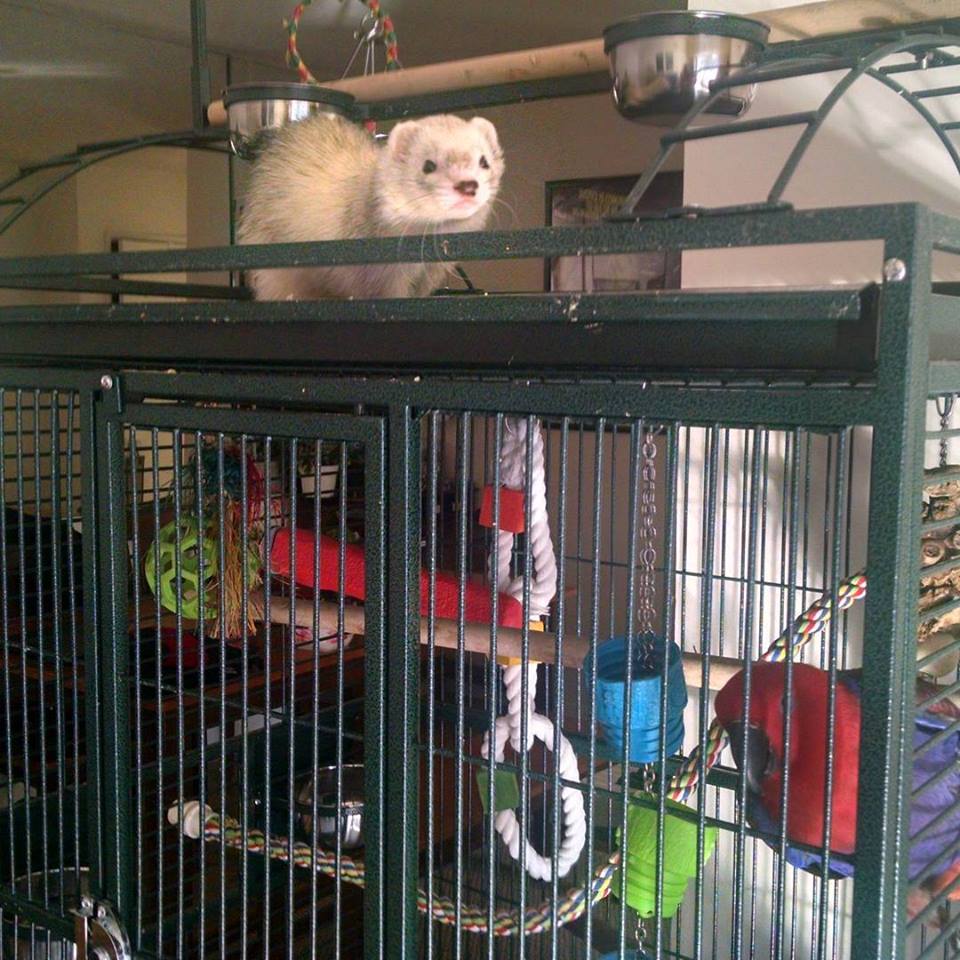 Ramona (ferret) was able to climb to the top of Missy's cage when a cat scratching post was left within ferret-jumping distance from the lower portion of the cage. Thankfully she made it with all her toes intact! Ramona was only discovered when Missy continued to show agitation about her unwelcome visitor. If you decide to share your home with both of these animals, we recommend that you plan for at least three barriers between them when they are not supervised. For example, the ferrets might be kept in a cage in a room with the door closed, while the parrot resides in its cage in another part of your living space. A parrot's cage is not ferret-proof. These cages were designed to contain your bird, not to keep ferrets out. Many bird cages do not have locking mechanisms for the small doors that allow access to food and water bowls. Trays that slide out at the bottom of the cage often have very little to keep a determined ferret from wiggling their way in. Bar spacing that is larger then three quarters of inch is more than enough space for a some ferrets to squeeze through. Anywhere a ferret's skull can fit, they can fit. Even some doors designed for people have enough room for a ferret to slide under! If your parrot's cage has bar spacing of one inch or greater, we would advise having at least four barriers since the parrot's cage cannot be considered an effective barrier. Add extra locks to cage doors and trays. We find that using a pellet type cage lining at the bottom of our parrot cages makes the trays too heavy for the ferrets to push. Alligator clips work well to secure the smaller doors for our smaller parrots. Cages for larger parrots tend to have locking mechanisms on all the doors as larger species of parrots are often smart enough and strong enough to figure out how to open their own doors. If these precautions seem extreme, keep in mind that the only thing keeping your ferret from hurting your feathered friend is time and access. Once you have done everything to make sure there are sufficient barriers in place, it is time to figure out a schedule for your pets. If your parrot's cage is in any area that your ferret can access during their play time, you may want to temporarily find another play area for your ferrets while your parrot adjusts to its new home. If your parrot is the established family member, you may want to slowly expose your ferret to its presence as it will likely be excited and overstimulated by the new environment. You will want to figure out a schedule in which there is adequate supervision whenever the number of barriers are reduced. If your household has other adults or children, it is extra important to communicate about when each animal will have its social time. After some time, you might gradually reduce number of barriers during supervised out-of-cage time. If your ferret has access to your parrot's cage and seems to ignore your parrot, please do not assume that your ferret is not interested in your bird. Your ferret may have been desensitized to the smell and sounds of the parrot, but it does not mean that your ferret is not interested in your bird. Ferrets are extremely near sighted and so it's unlikely that they can see and recognize your parrot while it's in its cage. Being able to see the parrot is guaranteed to renew interest in your bird and can trigger their predatory response. Ferrets can move very quickly and it only takes a second for your ferret to potentially injure your bird. Introductions between these species should only be attempted by professionals or those who are highly experienced with both animals. Please do not attempt this "just to see what will happen" as it has very high risk for both your ferret and your bird. Videos in which ferrets and parrots are seen calmly interacting or co-existing are likely created after a long process of behavior modification and training. Even with this training, the predatory instinct of a ferret can never be completely extinguished. If you would like to see cute interactions between these species, please enjoy the work of professionals and prioritize the safety of the animals in your own home!
South American Horned Frog generally refers to one of two species of frog, the Ornate Horned Frog and Cranwell’s Horned Frog. Ornate Horned Frog tends to be the slightly larger species. Females are generally larger than males. Once they are full grown, males have nuptial pads on the inside of their hands and males will tend to be more vocal. In their native environment, the local people refer to them as “ezcuerzos” which means “toad” in Spanish. These burrowing amphibians are actually frogs, not toads, as they have teeth that are connected to their jaw. True toads do not have teeth. It is not uncommon for these frogs to break skin if they bite a person. When the ground is dry and/or food is scarce, South American Horned frogs will develop a tough outer skin, like a cocoon to keep themselves from drying out. Once they are rehydrated, they will shed and eat this protective layer. This process is known as estivation. Quick Overview
South American Horned Frogs are popular as pets due to their simple care requirements. A 10 gallon tank is large enough to keep one individual. Multiple frogs should not be housed together as they may cause injury to each other. Some frogs may appreciate a shallow water dish, but they do not require one as they absorb moisture through their skin from the substrate. They do require areas to hide such as a log or a fake plant. Live plants that are not toxic can also be used in the enclosure with the understanding that the frog may occasionally dig up the plant as they love to burrow in the substrate. Frogs do not require additional heating or UVB lighting as long as the enclosure is in an area that is room temperature. UVB lighting should not be used with albino frogs as this may cause blindness. Most frogs have a voracious appetite so feeding should be scaled back if they begin appearing too plump. Smaller frogs will require smaller prey items. At Ferrets and Friends, LLC our South American Horned Frogs are fed two to three times per week. Our larger frog eats about five large sized crickets each week while our younger frog eats about three medium sized crickets. These crickets are dusted with a calcium with D3 supplement. Animal Care Cost Example (2017 prices): Set up
Animal Care Cost Example (2017 prices): Annual Cost
It has been a busy year for Ferrets and Friends, LLC! We have had significant growth, performing twice as many shows in 2017 as 2016. We have also seen some growth in the diversity and number of animal friends! This year, we debuted two new species (the chinchilla and the Sonoran Desert Millipede) and we added three new species that we are hoping to debut next year (the African pygmy hedgehog, the Mexican red knee tarantula, and the African bullfrog). It has been an exciting time for our animal educators to learn and work with these new animal friends. Unfortunately, this year we also had some significant losses. In 2017, we said goodbye to Gambit (ferret), Sophie (ferret), Honey (Palomino Blonde Tarantula), Capheus (Jackson Chameleon), and Paisley (South American Horned Frog). Our ferrets, Gambit and Sophie, have been with Ferrets and Friends since the beginning. We lost Sophie in early 2017 due to Ferret-FIP and we lost Gambit in the fall of 2017 after medications for his insulinoma were no longer effective. Both were about six years old at their time of death. Ages are unknown for Honey (tarantula), Capheus (chameleon), and Paisley (frog), but it is believed that Honey and Capheus passed away from old age. Paisley (frog) passed away due to unknown causes and was less than one year old at her time of death. Our Friends' Health in 2017At Ferrets and Friends, we value taking care of our animals in both illness and health. We are grateful for their hard work and cooperation. This year, we had some significant surgeries. Samson (ferret, five years old) had a surgery to amputate one of his toes and Ramona (ferret, four years old) had a surgery to remove bladder stones. Due to the increasing health problems that ferrets experience as they age, we have decided to start a retirement process for our ferrets beginning at age five. Currently, Samson will be semi-retired, but he is still showing interest in going to events. After all, snuggling is Samson's favorite activity! Other health updates include egg laying by our Leopard Gecko (Cici), Chinese Water Dragon (Jasmine), and Green Cheek Conure (Domino). It is important to make sure that any egg-laying animals have lots of exercise for strong muscles and calcium to replace what is lost when they are laying eggs. None of our animal friends showed any signs of egg binding and they continue to be active and healthy. So how much does it cost to keep our animals healthy and happy? In 2017, our animals cost over $9,000 in veterinary bills alone! Other animal care costs (including food, substrate, toys, heat and lighting equipment, and enclosures) totaled over $10,000. This does not include the human labor that goes into maintaining enclosures, socializing, and training our animal friends. New to the Zoo in 2017This year, we added a whopping 23 new animal friends to our care with Miss Lina joining our team with her own animal crew. Of those twenty-three animals, nine of them were rehomed animals or rescues. Sixteen animals were acquired as potential animal ambassadors. Some of these animals have already started doing shows in 2017: Tarzan & Jane (Leopard Tortoises), Riley, Pabu, & Abu (ferrets), Bumi (chinchilla), Tucker (Kenyan Sand Boa), and the Sonoran Desert Millipedes. Currently, Ferrets and Friends has 58 animals in our care. Not all of these animals are used for shows (currently about 35 are show ready at the time of writing). It's not uncommon for people to inquire whether we are accepting exotic pets that are being re-homed. In fact, over a quarter of our animals have previously had other homes before they arrived in our care. This is why we encourage people to thoroughly research any exotic pet that they may want. These animals are dependent on us to provide for their care and many can have demanding care requirements.
Most of our animals that are used in shows, we have raised from a young age. Shows can be stressful environments for these animals so we want to be sure that they are well socialized and they have temperaments that are appropriate for working around children. Rehomed and rescued animals can make great animal ambassadors, too! Each animal friends is unique.
Here's to an even better 2018! Happy New Year from your favorite animal friends!
Some of the most charismatic reptiles come packaged in shells. Turtles of all shapes and sizes capture the hearts of people all over the world. Turtle (and tortoise!) species all over the world hold many traits in common:
This is a grim outlook fr turtles, but all hope is not lost. Citizens and biologists have been teaming up all over the world to protect turtles and their nests. Turtles all over the world are being surveyed for science - citizens and biologists are walking the beaches and waterways to monitor the nesting activities of all kinds of turtles. Sea turtles, river turtles, tortoises are all having their nesting behavior documented, their nests protected, and their hatchlings escorted to the water.
Image above: Leatherback Sea Turtles being gathered by volunteers before being released into the water. http://www.sunglassesrequired.com/blog/2015/3/25/sea-turtles
These simple beach walks can be supplemented by nest protection, usually in the form of caging. Structures such as milk crates of wire metal cages can be carefully placed around the eggs to keep predators from digging up the eggs. It is very important that this light caging does not block the sun, which could cause the eggs in the nests to respond unnaturally - temperature determines the sex ratio or males to females in most turtle eggs, so it is important to not disturb this. Even without cages to protect the nests directly, beach walks can be used to assist hatchlings on their way to the water. The video below shows baby Leatherback Sea turtles (those pictured in the image above!) who were assisted down the beach to the water edge.
This simple conservation method is used all over the world. Costa Rica, Mexico, Panama, Sri Lanka, Cuba, Australia, and all along the coasts of the United States sea turtle nests are being protected. Beyond sea turtles, there are turtles like Maryland's own Diamondback Terrapin, who are subjected to nest surveys and hatchling assistance. One such event I participated in for three years were the nest surveys of Diamondback Terrapins. I was a volunteer for Maryland Department of Natural Resources who walked a two mile stretch of beach. I would look for turtle crawls along the beach, cage the nests using milk crates, and after 60 days the nests would hatch and I would measure and then release the turtles.
The purpose of this was to increase nest hatching for the terrapins, and hopefully increase population numbers. This return investment - having turtle population increase - is something I likely won't be able to see for many years. The long lives of turtles mean that often times no changes are noticed in the population util many years later, when hatchlings grow to be adults. Although the result are not immediate, in areas where depredation of nests are 100% simply having nests hatch is a huge success. The Northern Map turtles that I worked with went from 100% nest depredation to 80% nest success with caging. The reward of simply having nests hatch was amazing.
This simple concept of a walk on the beach emphasizes the idea that conservation of wildlife can be so simple. Above is a video of a conservationist I have had the opportunity to work with explaining why conservation is so simple.
“Never doubt that a small group of thoughtful, committed people can change the world. Indeed, it is the only thing that ever has.” – Margaret Mead. Turtle walks are organized all over - the links below can be used to learn more about turtle walks! Wildlife Act Turtle Foundation We Are Bamboo NSB Below are photos from my experience volunteering with Diamondback Terrapin nesting surveys! American Crocodiles (Crocodylus acutus) live in coastal areas from the Caribbean to south Florida. They live in salt and brackish water throughout ponds, creeks, mangrove swamps, and can occasionally be found in freshwater canals in South East Florida. These reptiles are ectothermic, which means they rely on the external environment for heat to regulate their body temperature. In cool air temperatures you can see them laying out in the sun to warm up, and once warm enough they will move to cooler areas. This cyclic movement between warm and cool locations is a 'shuttling' behavior that helps them to maintain their temperature for ideal body functioning.
These large animals are threatened by predation, low hydrologic conditions, and habitat loss. There are no natural predator s of adult crocodiles besides humans, but hatchling crocodiles have a very high death rate and are preyed upon by wildlife including birds, raccoons, and crabs. Hydrologic conditions of the water are damaging to crocodile nests. There are extensive drainage programs in south Florida that cause nests to become too wet or too dry, which results in egg-death. The final factor, habitat loss, was heavily impacted by the development of the Florida Keys. The Keys provided a large area of suitable habitat for crocodiles, but development for tourism has caused that area to become polluted and too disturbed to be useful to the crocodiles. World wide the crocodiles are listed as being endangered, however, the crocodile population in Florida has been doing well and was moved from being federally endangered to threatened. This decision was made due to some data that has been collected on the crocodile population over the past several years which showed an increase in nesting females as well as overall population size. The crocodiles are not in the clear yet, and are still being monitored for progress or setbacks. I personally have been able to take part in the collection the data that is being used to monitor the crocodile populations in south Florida. The populations are monitored throughout the year to make sure that they are doing well. There is much data collected on these animals, and I will share the main data types with you to show how we are keeping track of the population's health. There are surveys for population counts that occur. Boat go out into the salt water and brackish areas of south Florida and the coast where crocodiles are surveyed using spot lights. The spotlights cause the eyes of the crocodiles to light up, and then that crocodile is recorded as an individual, an its size is estimated and recorded. This is done four times a year and give us estimated population counts for each area surveyed. After theses spotlights surveys occur, captures are performed to record weight, length, and sex of individual crocodiles. this gives us information on the health of the population and accurate sizes to compare to the estimated sizes from the spotlight surveys. A final collection of data occurs during the nesting season. Nests are found by surveying beaches for crocodile activity via helicopter. From the air you can see where crocodiles have crawled in and out of the water to nest. Once beaches are identified, ground surveys to find and flag nests are conducted. Nests are marked by GPS point, and in some cases they will have a datalogger placed near the nest to record data on nest temperatures as the eggs incubate. Surveys are conducted to monitor the status of the nests while they incubate, and once hatching is deteced then survesy for hatchlings occur. The hatchling surveys consisted of spotlighting for baby crocodiles, catching them, counting them, measuring and weighing them, and giving the unique number so we can keep track of them if we catch them again. Recapture data is important for long-term studies and monitoring of populations so that you can tell which animals survive and which ones do not. This data is very important to make sure these crocodiles do not need to be placed back on the list of federally endangered species. Monitoring them is the best way to ensure their population is on the fast track to recovery, and not temporarily recovering only to begin declining again. Please remember to leave crocodiles alone if you encounter them in the wild. The photo above was taken with permission to handle the crocodiles for research, but touching them in the wild is illegal. Any person who touches or harasses crocodiles in the wild can be lawfully prosecuted, but it is also important to remember that they are dangerous and can hurt you - so you don't want to touch them anyways! More information on the American Crocodile can be found below: American Crocodile: Species Profile Status and Conservation of the American Crocodile in Florida: Recovering an Endangered Species While Restoring an Endangered Ecosystem Frank J. Mazzotti and Michael S. Cherkiss, 2003 (PDF, 1.9 MB) The Nest Environment of the American Crocodile Peter L. Lutz and Ann Dunbar-Cooper, 1982 (PDF, 5.63 MB) Osmoregulation of Crocodiles in Everglades National Park William A. Dunson, 1980 (PDF, 5.43 MB) Feasibility of the Establishment of a Captive-Breeding Population of the American Crocodile John L. Behler, 1978 (PDF, 29 MB) |
About the blogFerrets and Friends, LLC has four writers bringing you information on a variety of topics from pets to wildlife, education to conservation, and from new developments in our business to information about our industry. Learn something new each week! Archives
August 2020
Categories
All
|
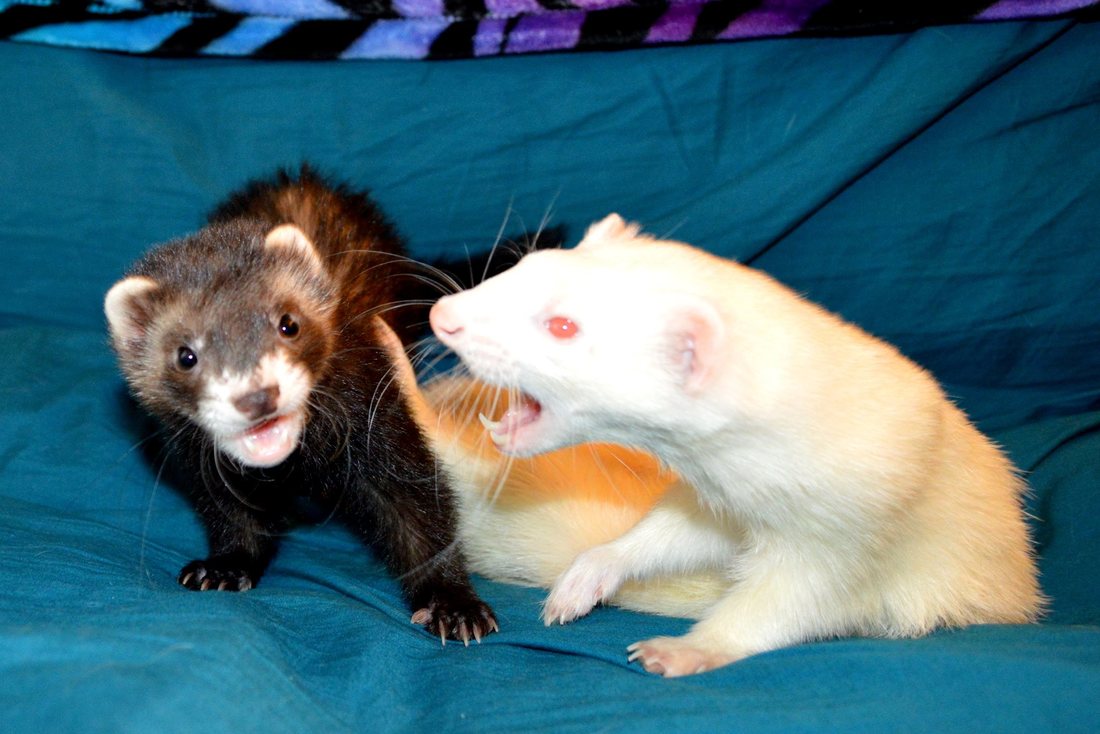
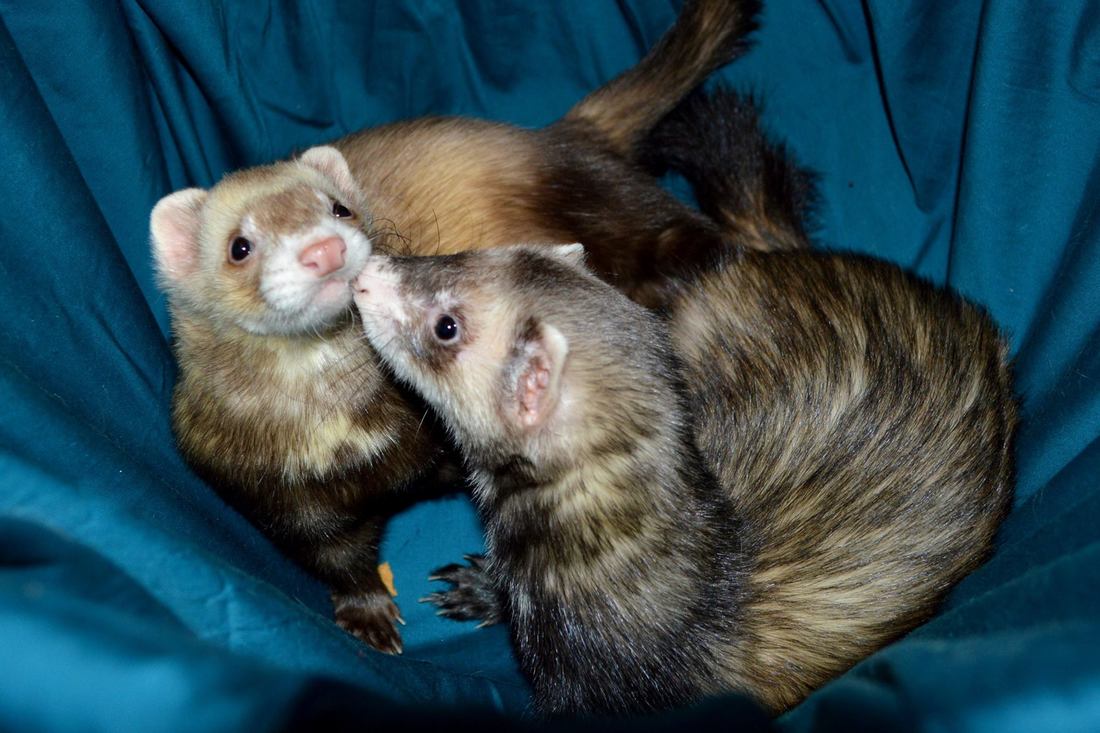
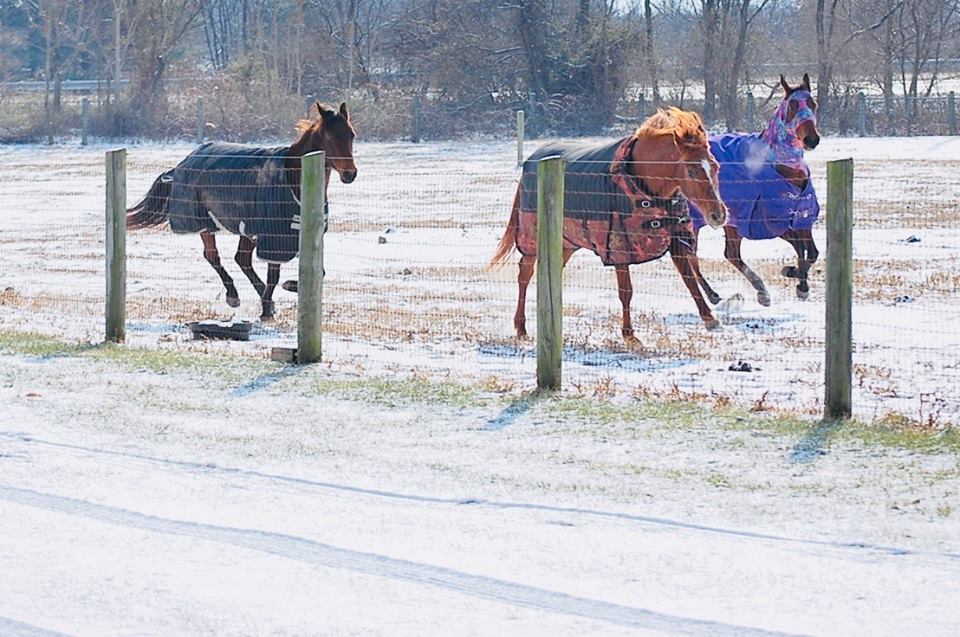

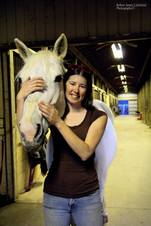
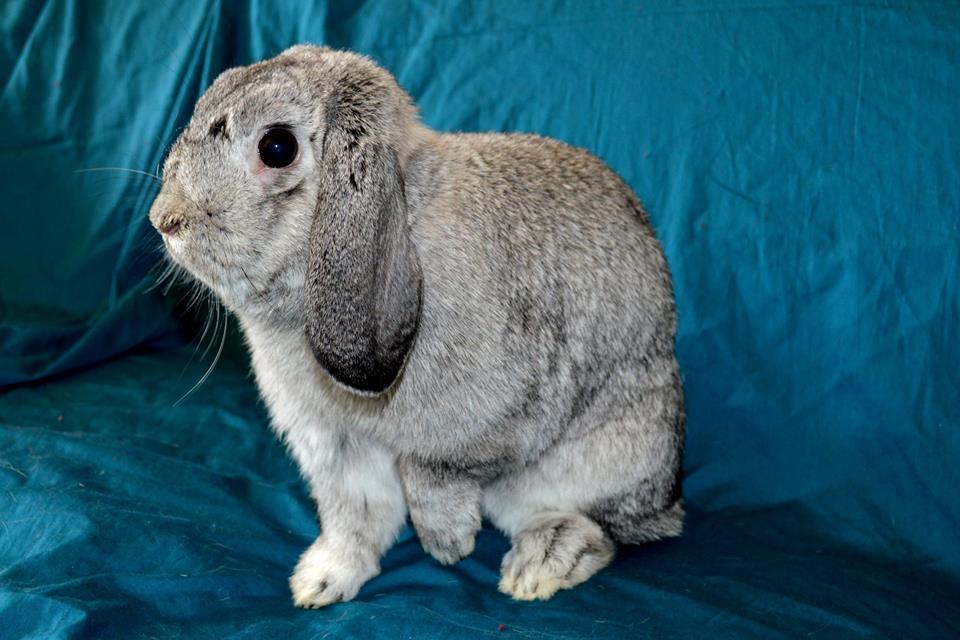
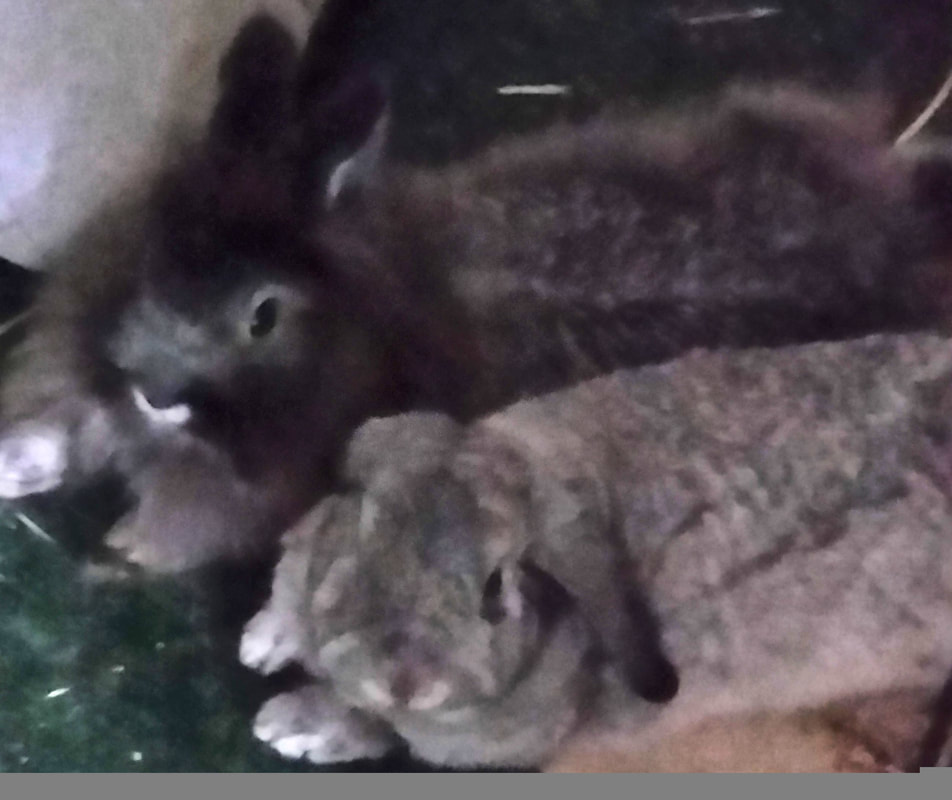
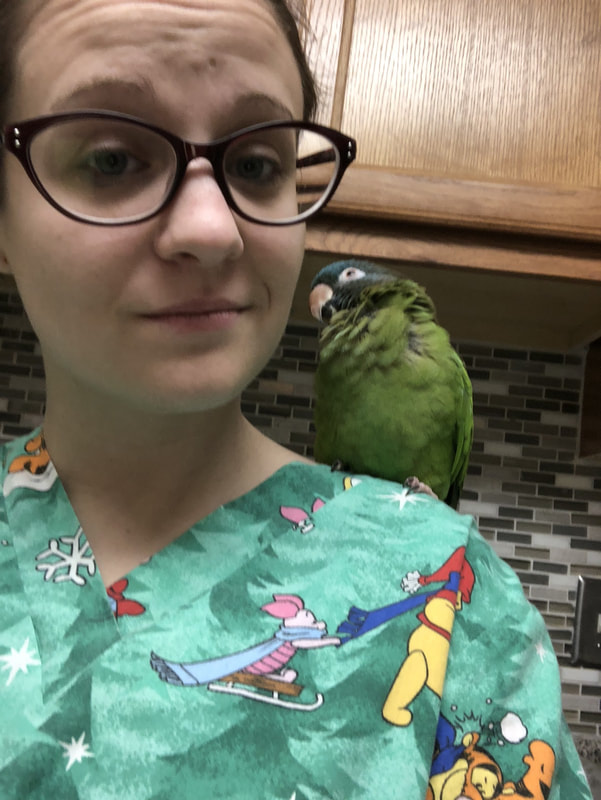
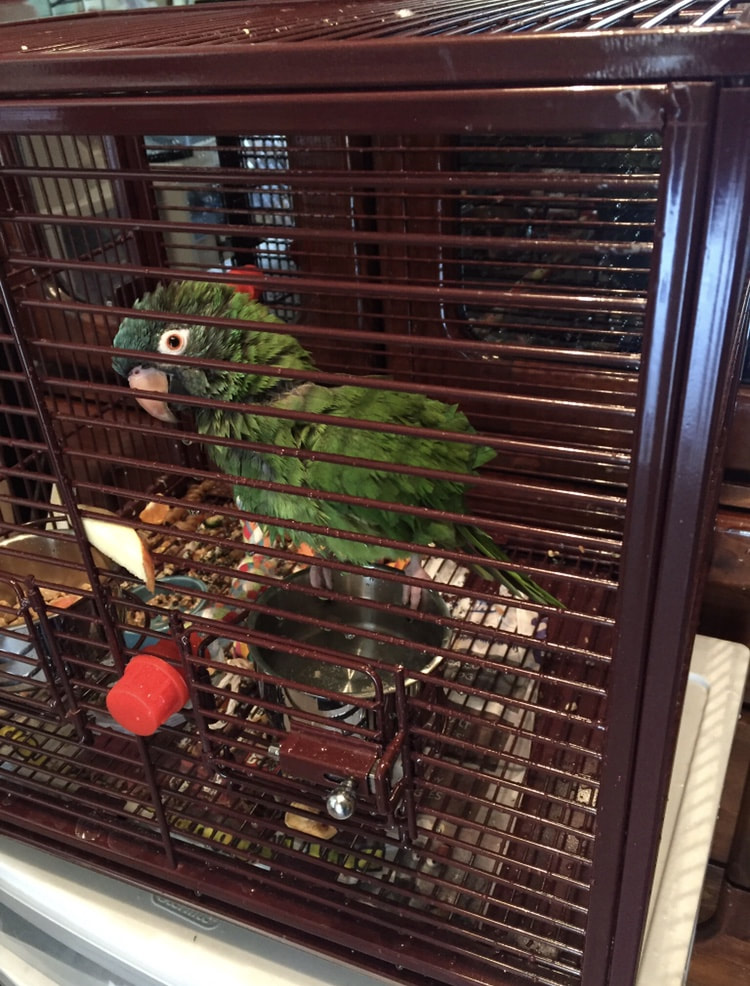
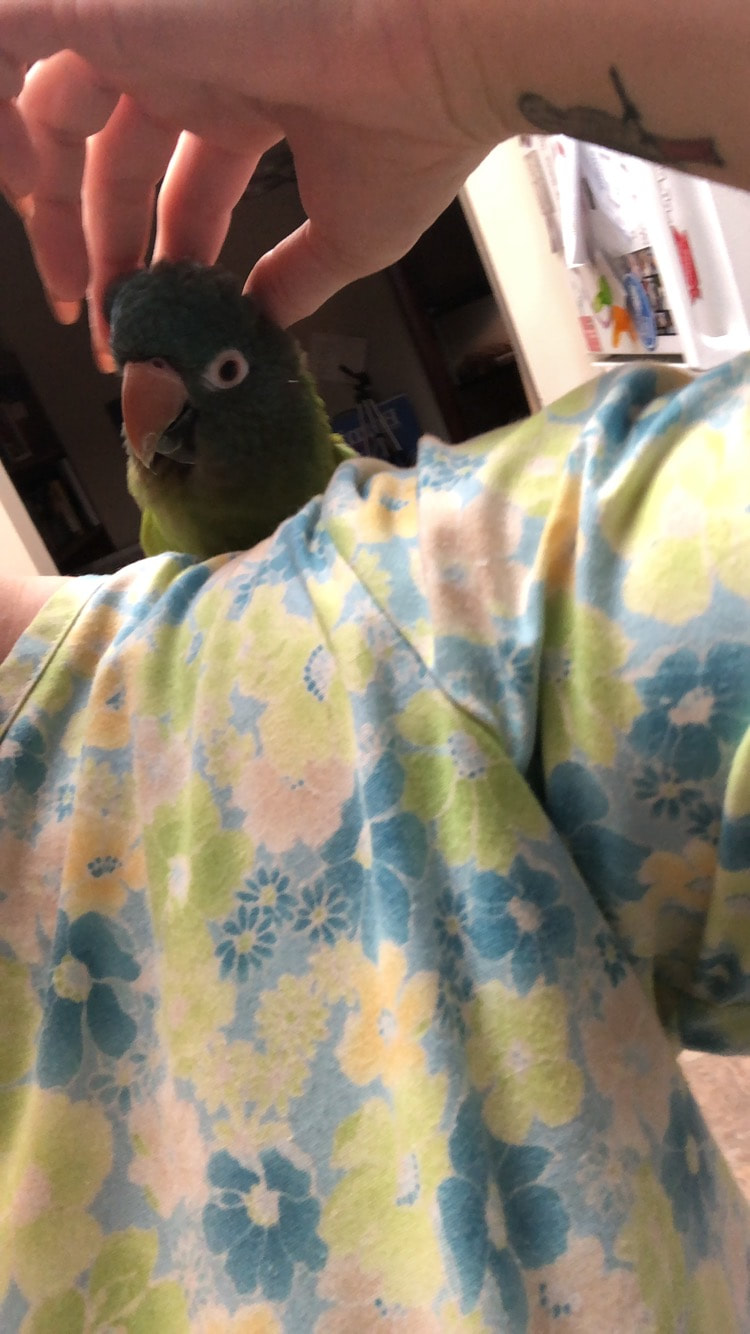
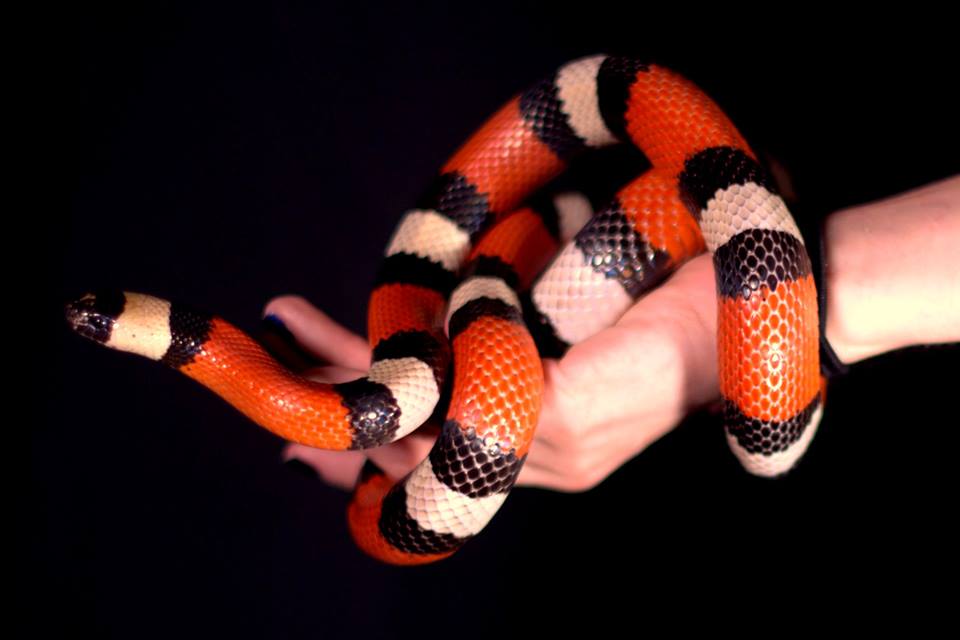
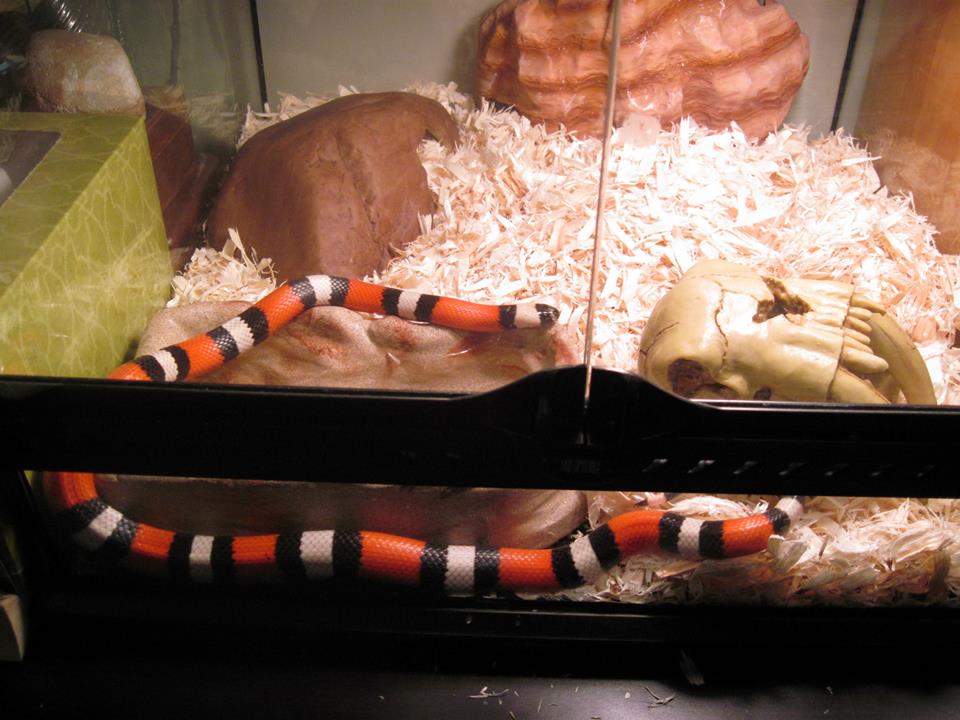
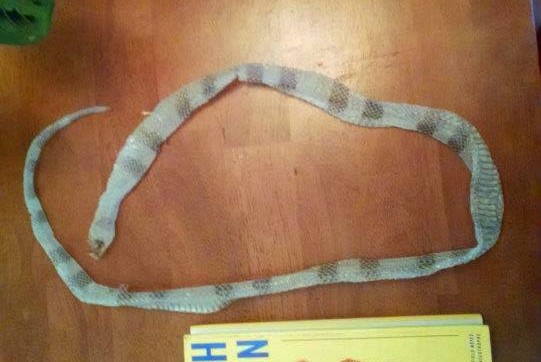
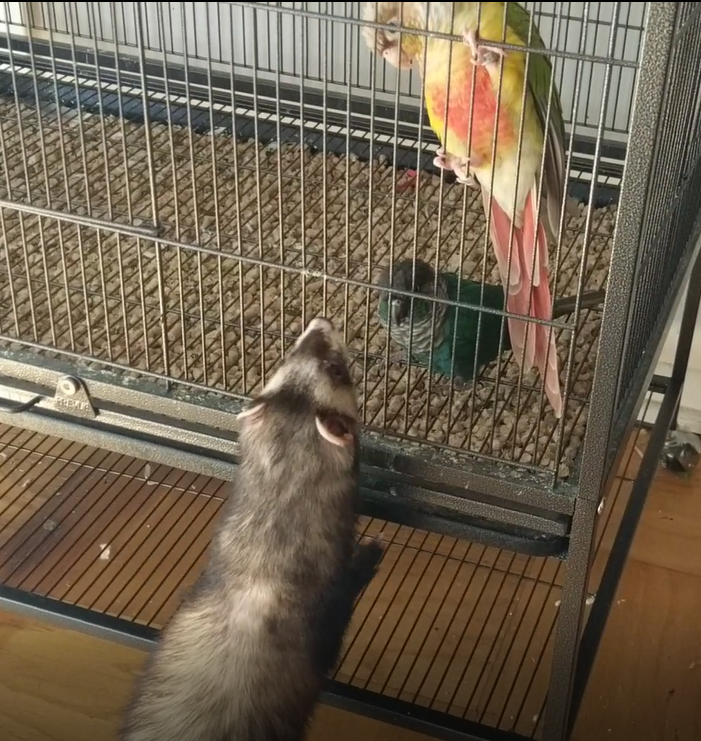
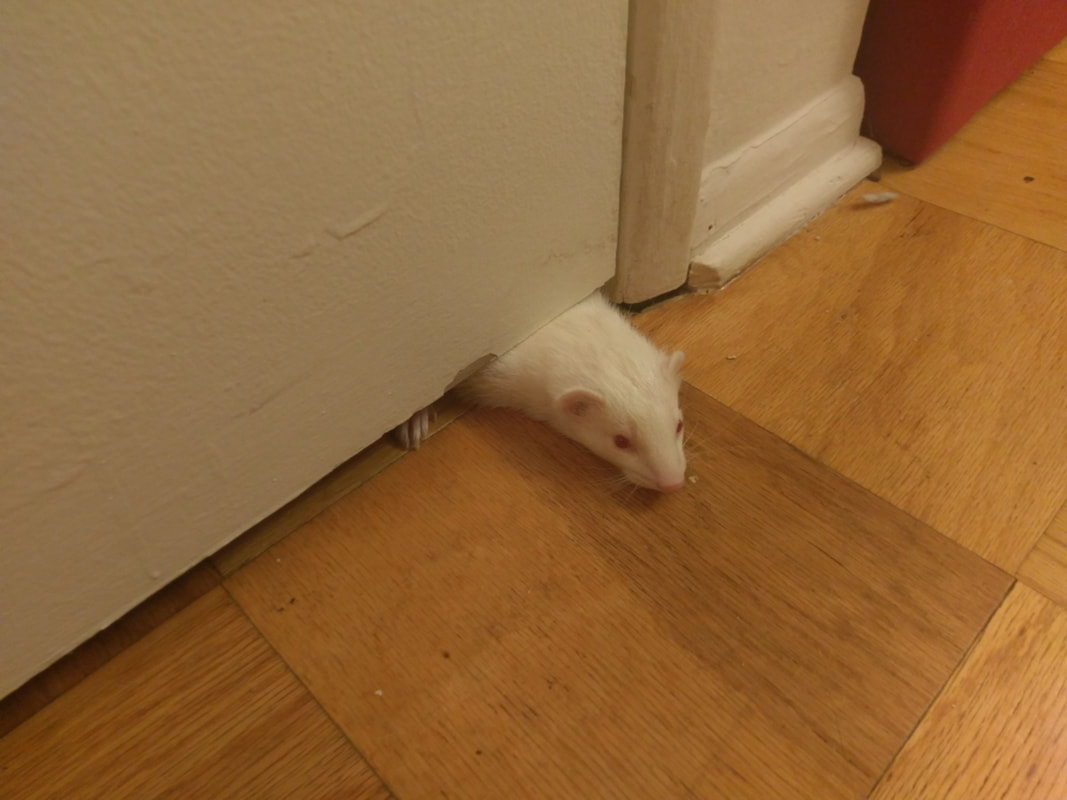
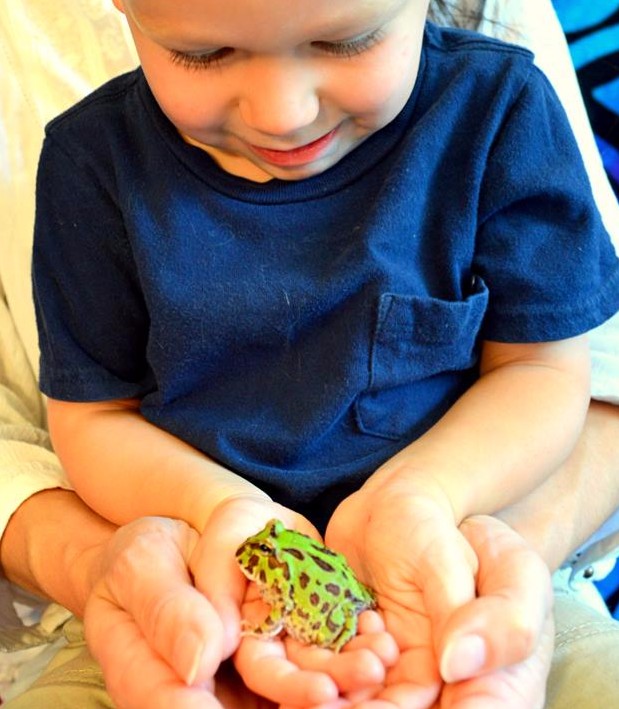
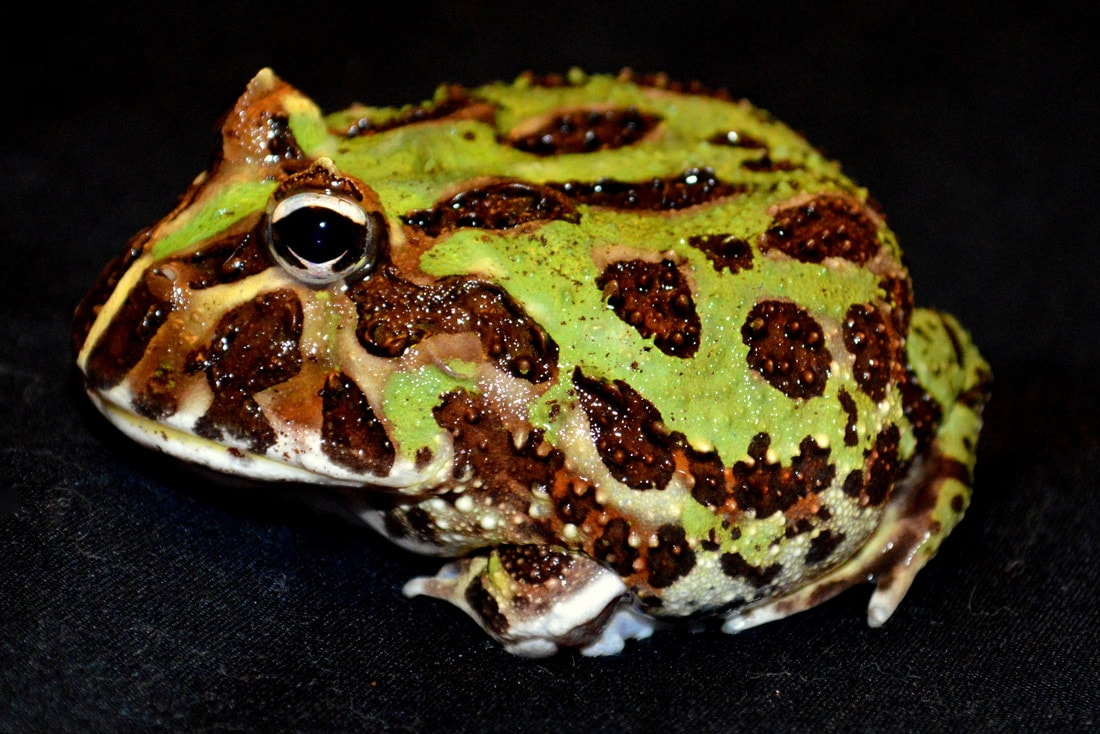
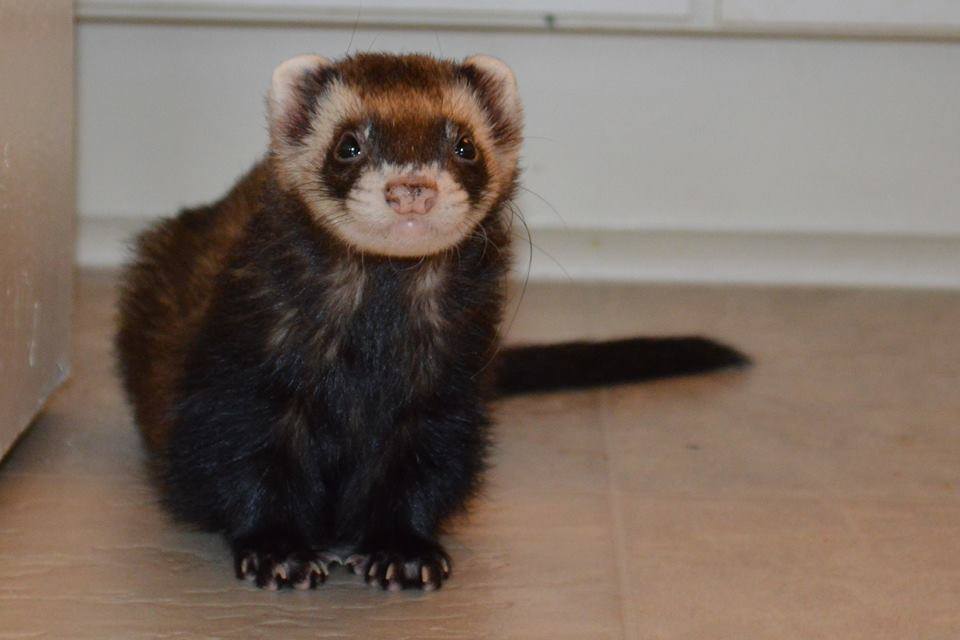
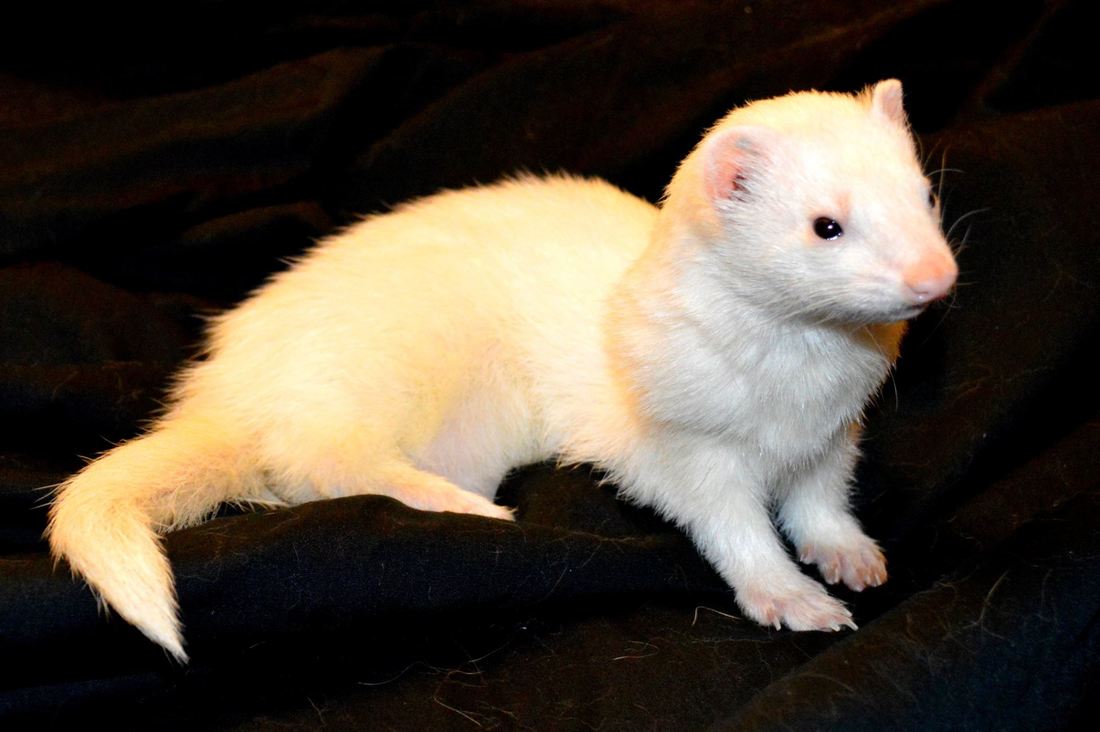
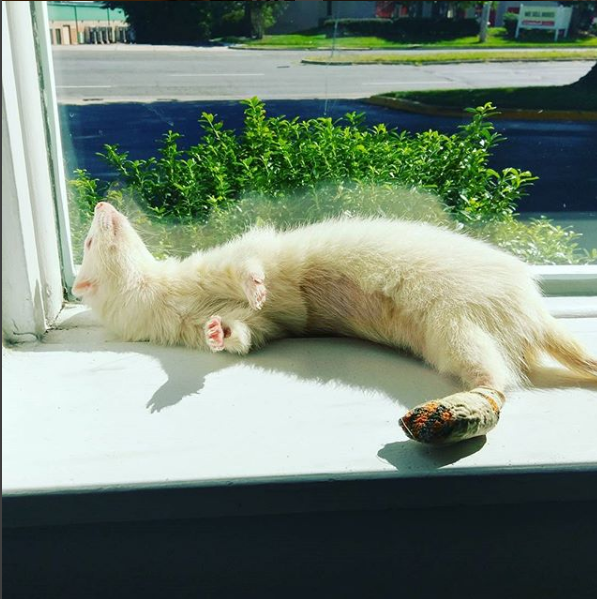
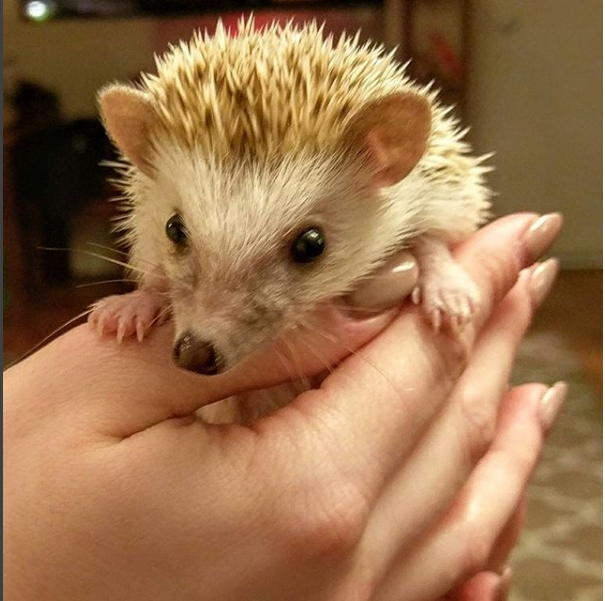
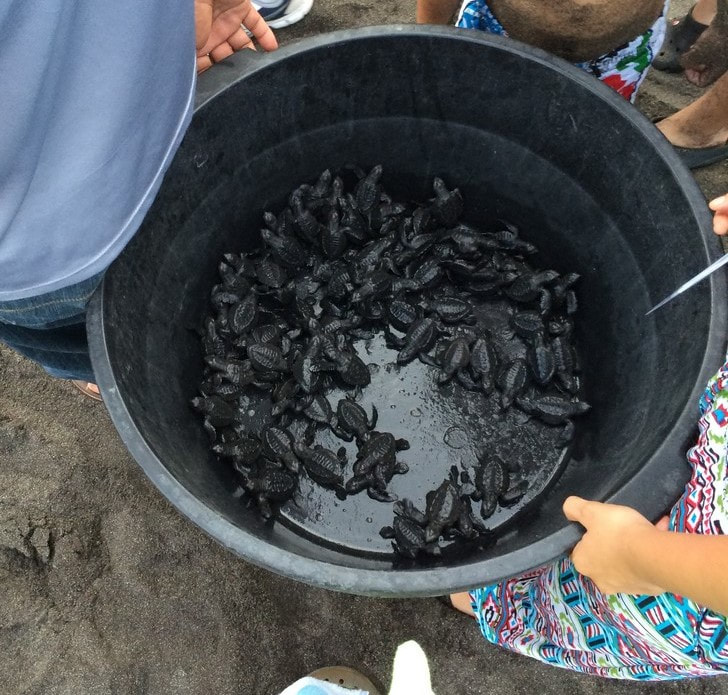
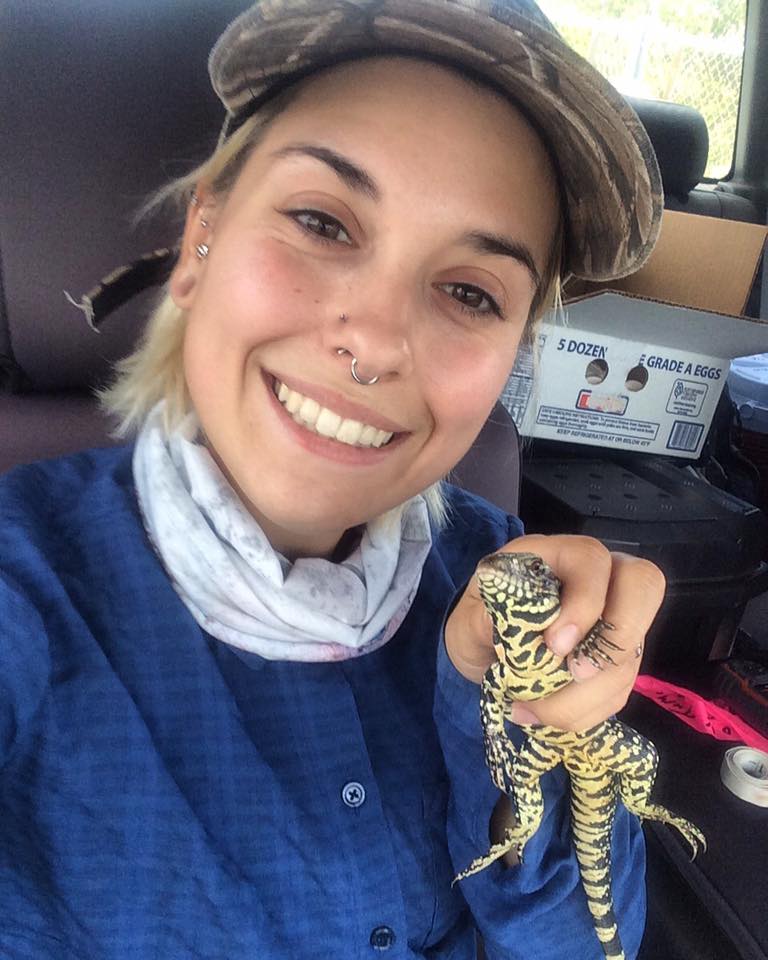
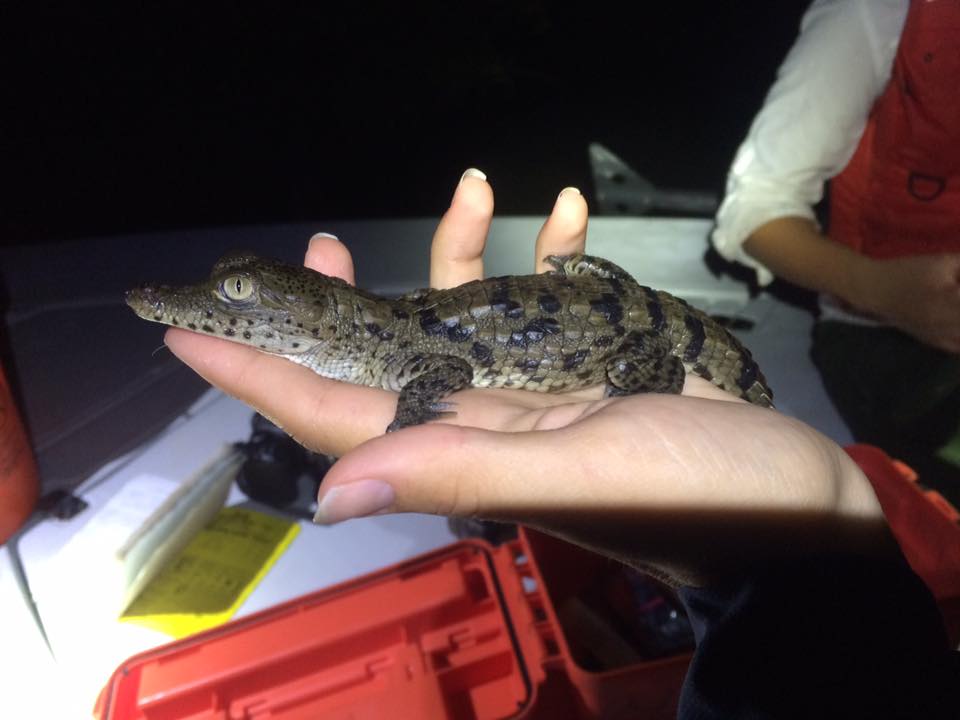
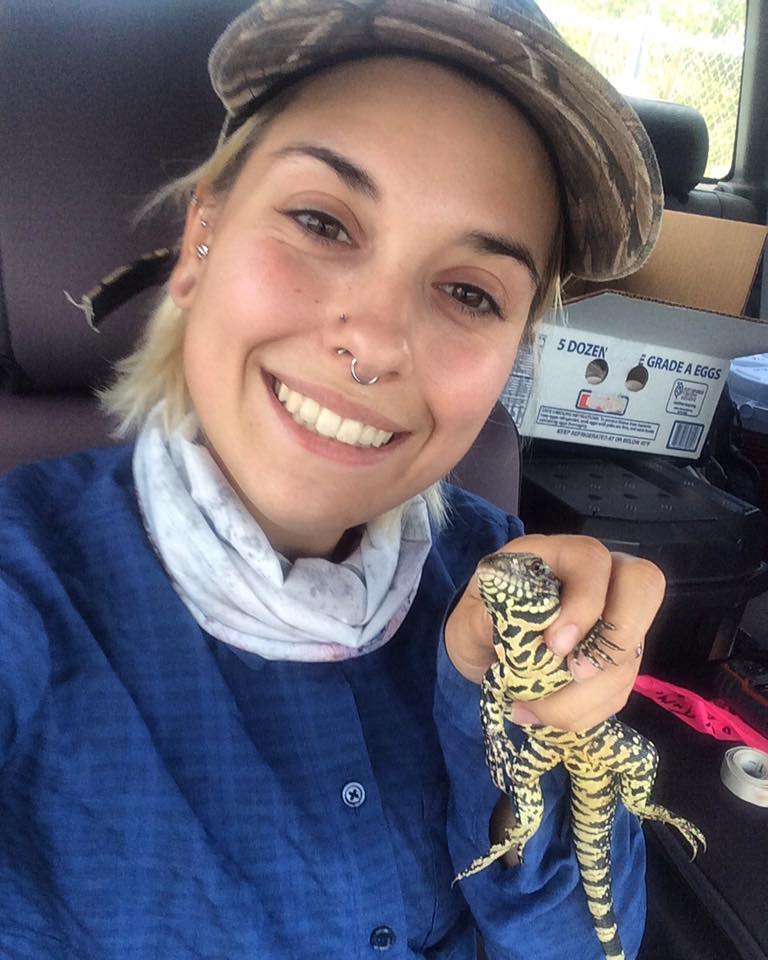
 RSS Feed
RSS Feed